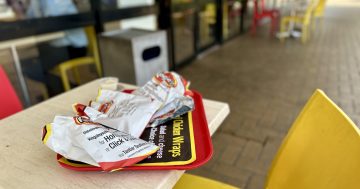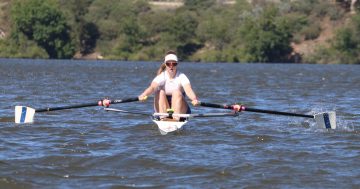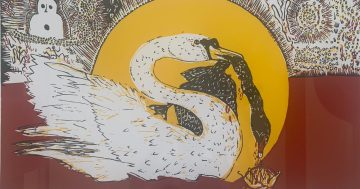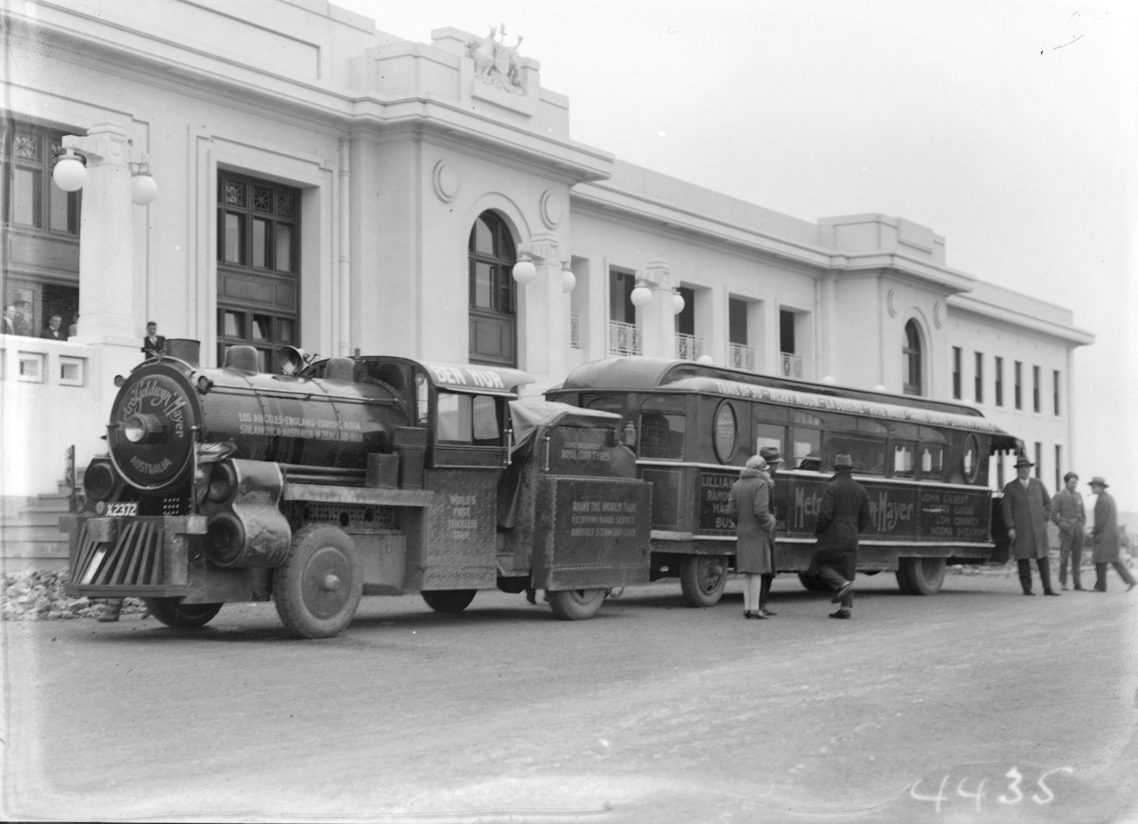
The ‘Metro-Goldwyn-Mayer Trackless Train’ outside Parliament House on 26 July, 1928. Photo: National Archives Australia.
With all the talk of the $557 million and five years it will take to get light rail from its current stop on Northbourne Avenue to near Commonwealth Park – and with the lake and journey to Woden still to go – many critics have two words.
Trackless tram.
After all, it’s been done before. And I’m not talking about in China. Or even Perth, where Australia’s first trackless tram arrived in September, ahead of testing before it’s deployed along a 7 km sliver of Western Australia’s coast.
On 26 July 1928, the ‘Metro-Goldwyn-Mayer Trackless Train’ arrived in Canberra as part of a national tour.
“Imagine an automobile which is the exact replica of a transcontinental engine, with tender and passenger car attached … and you have some idea of the marvel of the trackless train,” The Mount Barker Courier wrote a few weeks later when it passed through South Australia.
Built four years earlier by the same US-based film production company that has gone on to give us Ben Hur, The Pink Panther and James Bond’s Skyfall, the trackless train measured 16 metres and weighed nearly 10 tonnes, and employed two 90-horsepower petrol-powered engines to shift it to its top speed of 64 km/h (40 mph).
The carriage at the rear, described by many journalists at the time as “palatial”, included not only facilities for dining and sleeping, but also hot and cold running water, a buffet, ventilation, and – according to The Canberra Times – “even radio equipment for entertainment”.
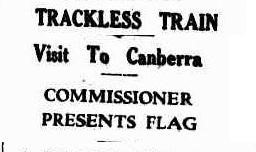
The headline from The Canberra Times, 27 July, 1928. Photo: NLA Trove.
There was also a 60-horsepower “auxiliary engine” to help in times the two vehicles had to be disconnected over rough terrain.
“Furthermore, it can be handled as easily as a modern touring car,” The Mount Barker Courier goes on.
MGM went further, and described the trackless train as the “eighth wonder of the world” in their advertising.
As for why, it was basically a big PR stunt for MGM. Or as the paper reads, “it is the mission of the train to call upon every exhibitor of Metro-Goldwyn-Mayer pictures … and convey to him and his patrons the good wishes of this widespread organisation”.
The expedition was sponsored by General Motors, and funds raised for various local charities along the way.
By the time it reached Australia, it had already racked up “over 100,000 miles” on a “remarkable travel achievement” through the US, Mexico, Canada, England, Scotland and then across the English Channel to “practically very European country”.
Egypt and other parts of Africa were next, followed by South America. It was shipped across the Pacific from Panama to Brisbane in April 1928. India would be next.
On board was a ‘visitor’s book’ which by then, had accrued signatures from the queen of Holland, king and queen of Belgium, lord mayor of London, US president Coolidge, German president Hindenberg and Italy’s Premier Mussolini.
The trackless train travelled down through NSW, stopping past Newcastle, Sydney and Goulburn (to name a few), en route to Canberra.
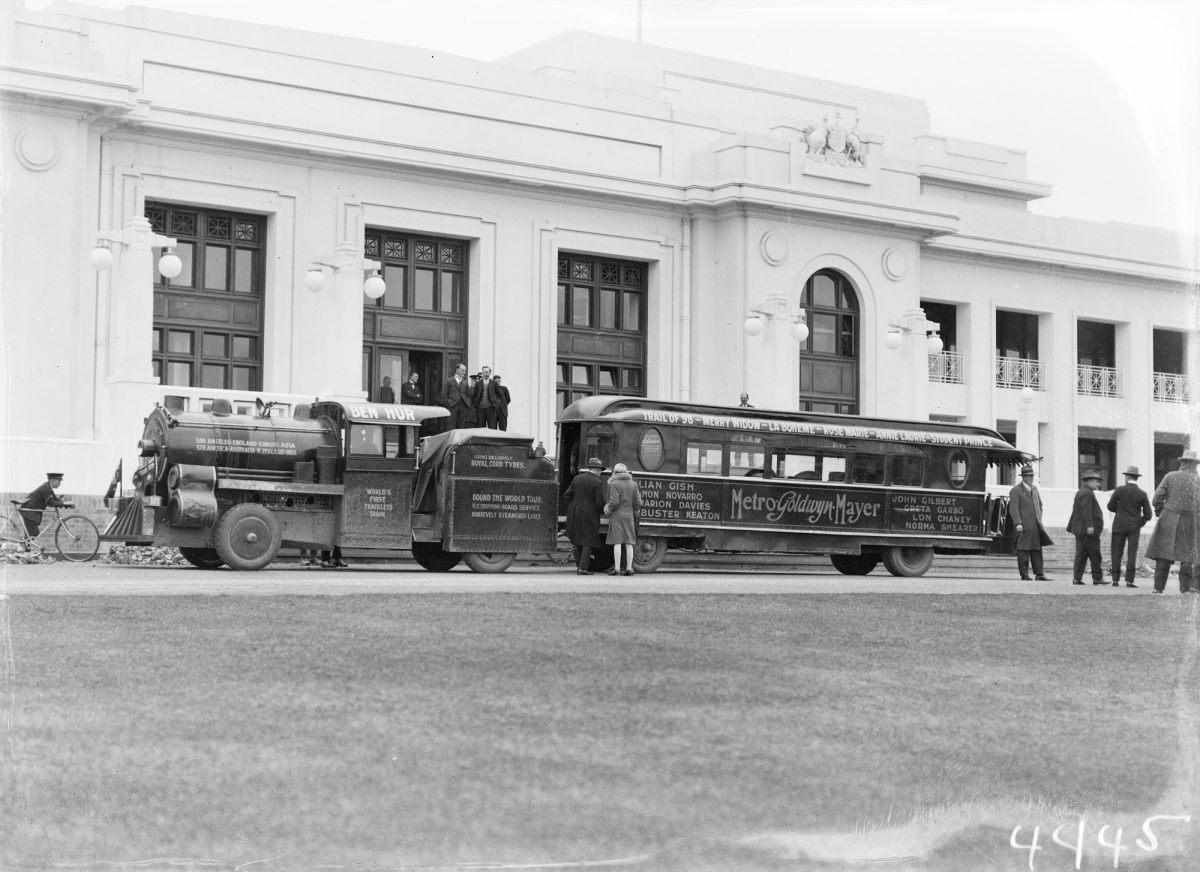
The Trackless Train had a top speed of 40 mph (64 km/h). Photo: National Archives Australia.
“A few minutes behind time, the Metro-Goldwyn-Mayer Trackless Train arrived at the Federal Capital Commission offices shortly before the luncheon hour yesterday,” The Canberra Times reported on 27 July.
“A fair crowd of Commission officers and sightseers had assembled to see the novel means of land transportation.”
After looking over the train and signing the book, the commissioners set off for a ride to Parliament House where the MGM company representative, “Mr D. Lotherington”, was presented with an Australian flag “to be carried by the train on the remainder of its tour, and presented … to the president of the United States on the return of the world travellers to their homeland”.
Once three local school children had taken up a collection for the ‘Picton Lake TB Settlement Scheme’, the train left for Queanbeyan.
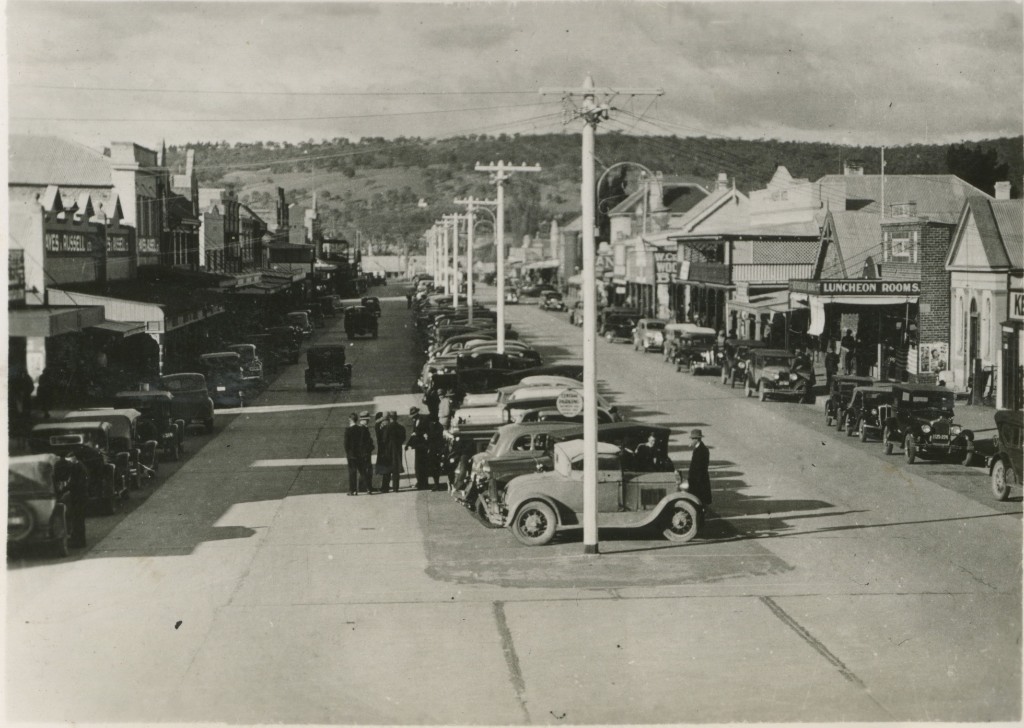
Centre parking in Monaro Street, Queanbeyan circa 1940s. Photo: Queanbeyan Museum.
It pulled up outside St Gregory’s Hall in Queanbeyan later that afternoon where it “evoked a great deal of interest”, according to The Queanbeyan Age. Its driver proved a character too.
“The driver of the wonder train, ‘Bill’ Parsons … isn’t a talker except to occasionally enquire, ‘Say, when do we eat?’ and the more often the eats came to light, the better Bill is pleased.”
From here, the train continued on to Yass and Wagga Wagga and “by easy stages” through Victoria, South Australia and Western Australia.
So yes, Canberra has done the whole trackless tram thing before. And it proved a hit. Is it time to revisit?
Original Article published by James Coleman on Riotact.






